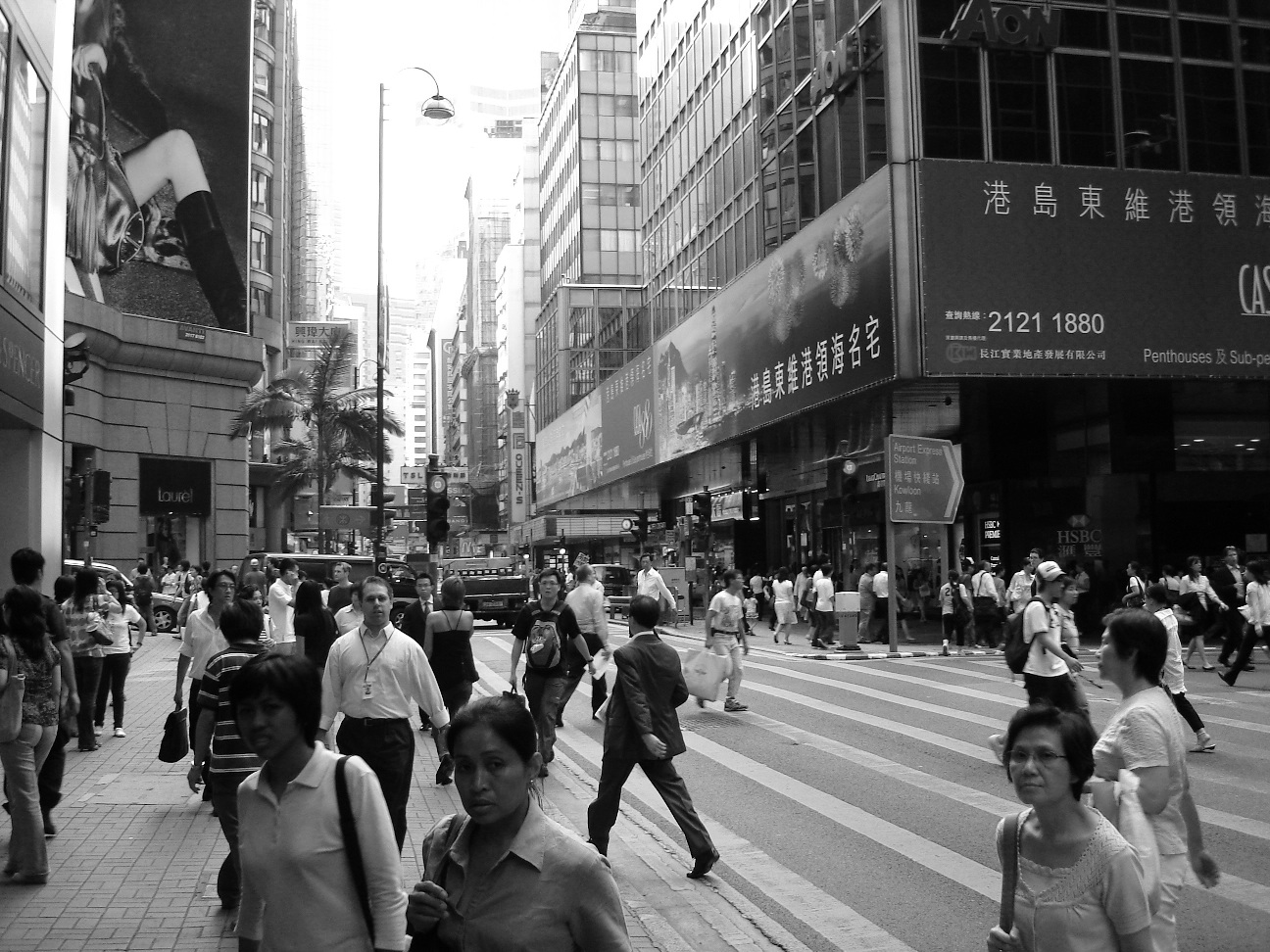Hong Kong History
Here is just a short recounting of Hong Kong history. If you’re interested in learning more, I recommend the Hong Kong museum of history.
Prehistoric Hong Kong
The oldest archaeological evidence of human settlements in Hong Kong were found in Chek Lap Kok and have been dated back to 37,000 to 33,000 BC. While numerous stone and bronze age artifacts have been found, the first written records from the area started when the area was incorporated in China.
Imperial China Era
The territory was consolidated under Chinese rule around 200 BC. Although largely barren, several coastal villages flourished from the riches of the seas, producing salt and pearls as well as ordinary fishing.
Still, it was a rural area without major population centres. One of the more notable events for Hong Kong during the Imperial China era took place in 1276 when the Mongol invasion of China forced the emperor to flee. The Southern Song Dynasty court moved to Hong Kong for a brief period while being chased down by their enemies. The Mongol Yuan dynasty gave Hong Kong its first population boom as many Chinese refugees from wars and famine entered the area.
What is now the suburb of Tuen Mun in the western New Territories became one of the more important settlements in the region due to its port and that it also served as a military outpost. The Portuguese were the first non-Asians to visit Hong Kong in 1513, and invaded Tuen Mun before getting thrown out by the Chinese.
Intensive harassment by pirates based in Japan made the Chinese government impose various restrictions on the coastal areas for long periods of time, occasionally going so far as to order coastal settlements, including villages in Hong Kong, to be abandoned.
Much later, around 1800-1810, Cheung Chau island in Hong Kong became the home of a legendary pirate named Cheung Po Tsai, rumoured to have commanded a fleet of several hundred ships.
Colonial Era
Meanwhile, several European powers, and Britain in particular, had started to build an increasingly expansive global trade network. By the early 19th century, the British were importing large quantities of tea from China. While there was some interest in British luxury products like clocks and watches, they were still having a hard time finding commodities to pay the Chinese and balance the trade.
The Chinese mainly wanted to trade in silver, of which the British didn’t have much. Their solution was to draw profit by growing large amounts of opium, mainly in India, and sending it to China. But it should be noted that opium was also being sold legally in Britain and many other countries. Either way, the Chinese moved to block the trade and the friction escalated into the First Opium War and later the Second Opium War. The upshot was that the British forced China to open up its ports to their traders and to secede Hong Kong.
Although the British quickly established themselves in the new colony, most of the population has always been ethnically Chinese, especially due to periodically large immigration from the Mainland. When the British first took control in 1841 the population was around 7,450, most of whom were Tanka fishermen living in coastal villages. But the devastating civil war sparked by the Taiping rebellion (1850-1864) lead to the first great wave of Chinese immigrants. According to the census of 1865 Hong Kong’s population was 125,504, with only around 2,000 Europeans and Americans.
The city quickly became a major trading port for goods to and from China as well as other parts of Asia. The flourishing economy also gave rise to a growing financial sector, with the Hong Kong Shanghai Banking Corporation (HSBC), established in 1865, which would become a key player in the development of Hong Kong and it’s largest bank, as well as being one of the oldest and largest banking groups in the whole world.
As the colony grew and became more crowded, but also more important, the British wanted to expand the territory, especially to make the holding easier to defend. In 1898 Britain demanded a 99-year rent-free lease on what is now called the New Territories. China’s ruling Qing Dynasty, which had at this point grown utterly weak and discouraged by repeated defeats against foreign powers, granted the lease.
Japanese Occupation Era
The Japanese had been making inroads into China for some time when all-out conquest began in 1937. As tension grew over the years Britain realized the growing risk of a Japanese invasion of Hong Kong. The British took advantage of the New Territories it had leased some four decades earlier and constructed a substantial set of defensive positions named the Gin Drinkers Line. It was hoped that even though the force in Hong Kong was fairly small, they might be able to hold the Japanese off for up to six months. The defensive line was even called “The Maginot Line of the East” – unfortunately it worked about as well…
On December 8th 1941, less than eight hours after the attack on Pearl Harbour, the Japanese entered Hong Kong. Discovering serious flaws in the British defensive position, they then proceeded to take all of the colony in eighteen days. In the process, the Japanese troops committed numerous war crimes against POWs and civilians alike, as they had done throughout their campaign in China. The occupation continued until Japan surrendered.
Post-war Era
But of course, the Japanese were eventually defeated and Hong Kong was brought back under British control. The rest of the 20th century turned out great for Hong Kong as it became the most international city in Asia and a very successful centre of global finance. The free market economic system worked very well, and attracted a constant flow of immigrants from the struggling People’s Republic.
But the Chinese hadn’t forgotten about Hong Kong, and the terms of the agreement the British had signed did stipulate that they were to return the New Territories to China once the 99-year lease ended in 1997. By this time the urban landscape had already started stretching into those areas and it has done it even more ever since, and chopping up the Hong Kong region would be very awkward. Meanwhile the Chinese put a lot of pressure on Britain to return Hong Kong in what’s been called a “war of words”. In all fairness, it had been conquered in a war of aggression, and the British eventually had to conceed.
A deal was brokered under which Hong Kong would remain a separate entity within China, “one country, two systems”. Hong Kong has it’s own say in most matters, but are subject to China when it comes to foreign relations and military matters. The treaty was signed in 1984.
A lot of people living in Hong Kong were very worried about the Chinese takeover. Particularly, the Tiananmen Square protests in 1989 spurred their worries. The fear of what would happen under Chinese rule supported a massive wave of emigration. Almost one million people moved away from Hong Kong in the period from the conclusion of negotiations in 1984 until the handover ceremony in 1997.
Chinese Era
The Chinese rule hasn’t turned out as oppressive as some speculated, but neither has any progress been made on establishing a proper democracy in Hong Kong, a process that was started in the final years of the British. On the other hand, the people did manage through mass protests to put a stop to some of the PRC excesses proposed in Article 23.
Hong Kong has also been victim to epidemic diseases, especially the SARS epidemic which made everyone wear face masks and seems to have greatly traumatised the people, even though only around 300 people actually ended up dying.
In general, Hong Kong has stayed on its previous trajectory of growing richer and increasing population through immigration. The economy isn’t exploding in the way of Mainland China, but compared to the depressed growth of the rest of the world, the city is doing quite well.

